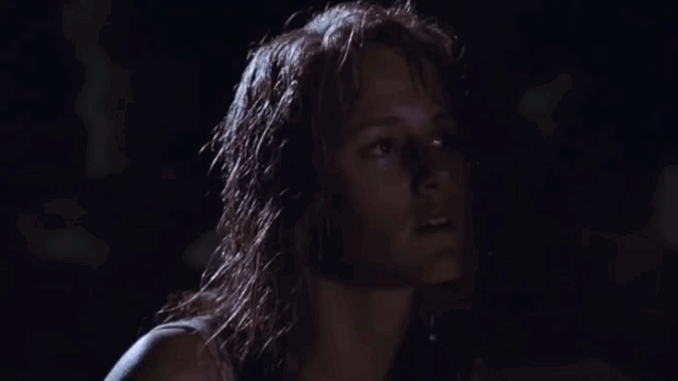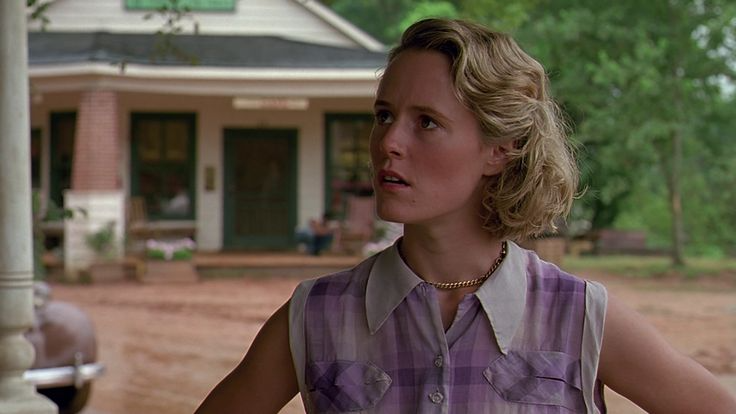
In Fried Green Tomatoes, some of the most devastating moments aren’t delivered with screams or tears — they arrive in silence, in the soft crinkle of paper, in a glance held just too long. One of these powerful, quiet storms is the scene where Ruth reads a goodbye letter from Idgie — a moment so restrained, so tender, that it aches.
This scene may be brief, but it contains an ocean of emotion — heartbreak, sacrifice, and a love too deep for its time.
The Context
At this point in the film, Ruth is trapped. She’s living in Valdosta, married to the abusive Frank Bennett. Her life is defined by fear, isolation, and duty. Idgie Threadgoode, wild and fiercely loyal, has traveled to try and convince Ruth to leave him — but Ruth, scared and torn, refuses.
Then comes the letter.
Simple. Folded neatly. No embellishment.
Inside is not just ink on paper — it is Idgie’s heart, quietly breaking.
The Letter (Reimagined)
While the film doesn’t reveal the exact words of Idgie’s letter, its emotional essence can be distilled into something like this:
“Dear Ruth,
I understand. I won’t bother you again. You have a life you’ve chosen, and I won’t stand in the way. But if you ever need me — truly need me — you know where to find me.
Always yours,
Idgie.”
It’s gentle. Not angry. There’s no blame.
But the message is crystal clear:
“I love you enough to let you go — even if it kills me.”
Ruth’s Emotional Landscape
As Ruth reads the letter, her reaction is quiet — too quiet. But in that stillness, we see:
-
Recognition: that Idgie has stepped away, not out of indifference, but out of love.
-
Regret: for not being able to leave with her.
-
Fear: that this might truly be the end — not just of their friendship, but of the one place Ruth has ever felt safe.
She doesn’t cry right away. She doesn’t scream or call out.
She presses the letter to her chest, as if to protect it — or as if it’s the only warmth left in the world.

Performance Notes: Mary-Louise Parker as Ruth
Mary-Louise Parker plays the scene with masterful restraint. Her eyes do the talking — darting across the page, widening, softening. Her hands tremble slightly. Her lips tighten, then part, then seal again. A breath catches in her throat.
She doesn’t fall apart — she folds inward.
That subtle implosion is what makes the scene so painful. It’s not cinematic heartbreak. It’s real-life quiet devastation — and it hits like thunder muffled by distance.
What Makes This Scene So Powerful?
-
It’s the first true shift in Ruth’s inner world.
The letter becomes a mirror, showing her the cost of staying — and what she has lost by doing so. -
It’s a portrait of unspoken, forbidden love.
In a time when two women could not openly express romantic affection, this letter says everything — without ever saying it outright. -
It captures the pain of letting go for someone else’s sake.
Idgie’s goodbye is selfless, but heartbreaking. She gives Ruth the freedom to choose — even if the choice breaks her own heart.
Symbolism in the Letter
-
The Paper: fragile, like their situation.
-
The Tone: soft, never accusatory — a reflection of Idgie’s protective nature.
-
The Silence After: deafening, filled with unsaid words and unrealized dreams.
What Happens Next?
While the letter scene is framed as an ending, it actually plants the seed of liberation in Ruth’s mind. It is the catalyst that will lead her, eventually, to leave Frank — and return to Idgie not just as a friend, but as someone who finally chooses herself.
That’s the power of the moment:
It doesn’t scream “change is coming.” It whispers, “You deserve more.”
A Love Too Big for Words
The goodbye letter scene is not flashy. It’s not quotable. But it lingers. Because it speaks to every unspoken goodbye, every time we’ve loved someone enough to step aside.
In that moment, Fried Green Tomatoes delivers one of its quietest, most haunting truths:
Sometimes the most loving thing you can do…is let them go.
